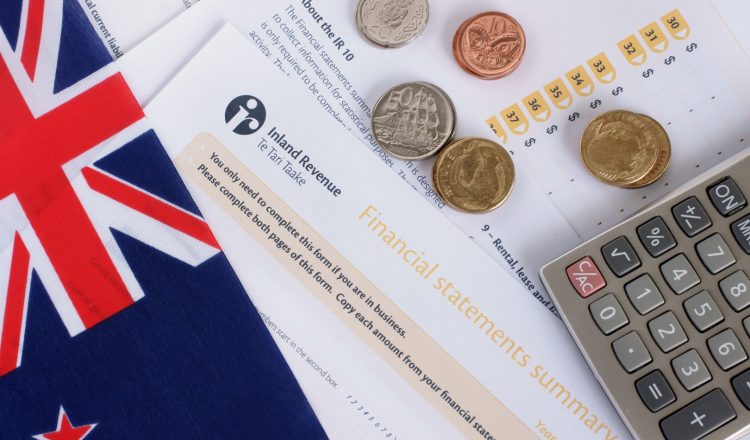課税-一般サービス税 (GST)
GSTは、GST登録者がニュージーランド国内で商品やサービスを提供する際に課される付加価値税です。GSTの税率は、通常、供給額の15%です。
物品やサービスの供給者は、その供給者が行った課税対象の供給の年換算額が、12ヶ月間で60,000NZドルを超えるか、超える可能性がある場合には、GSTの登録が必要です。さらに、課税対象となる活動を行っている(または、特定の日から課税対象となる活動を行うつもりがある)場合には、任意で登録することができます。また、ニュージーランドで課税対象となる活動を行っていない特定の非居住者についても、一定の要件を満たせば、任意登録が可能です。
登録者が物品やサービスの供給に対して課すGSTは、「アウトプットタックス」と呼ばれます。登録者は、課税期間中に行われた供給に対して課されるアウトプットタックスを、その供給を行う過程で登録者が支払ったGST(インプットタックス)で減額します。差し引かれた金額は、内国歳入庁に支払われるか、還付金として請求されます。
ニュージーランドの最終消費者に商品を供給するオフショア業者は、ニュージーランドへの総売上高が12ヶ月間で60,000NZドルを超える、もしくは超える可能性がある場合、1,000NZドル以下の輸入商品に対して、ニュージーランドGSTの登録、徴収、納税が必要となります。1,000NZドル以上の輸入品には、通常、輸入GSTが課せられます。また、デジタルサービスや無形資産などの 「リモートサービス」を提供する非居住者の業者(電子マーケットプレイスを含む)は、ニュージーランドに居住する消費者への供給総額が12ヶ月間で6万NZドルを超える場合、GSTの登録が必要となります。
一部の供給(特に金融サービスの供給)はGSTが免除されます(ただし、金融サービスの供給の一部はゼロ税率の供給として扱われます)。さらに、一部の物品(継続企業の売却を含む)はゼロ税率(GSTが0%になる)となります。
また、GST登録者同士の間で行われる土地を含むほとんどの取引は、一定の基準を満たすことで、GST上のゼロ税率となります。
非課税とゼロ税率の主な違いは、ゼロ税率の供給を行う登録者は、その供給を行う過程で支払ったGSTに対するインプットタックスの控除を申請できるのに対し、非課税の供給を行う登録者はそれができないことです。
GST申告は、事業の売上高に応じて、1ヶ月、2ヶ月、または6ヶ月ごとに行う必要があります。デジタルサービスや無形資産、低額商品の非居住業者がGST登録している場合、3ヶ月ごとにGST申告書を提出しなければなりません。

















































